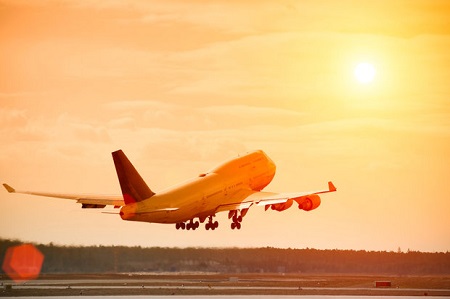New details have emerged explaining why planes find it difficult to take off from the airport when the weather if too hot.

Illustrative photo
While the heat wave across the UK continues to draw many into air conditioned offices, this week saw temperatures so hot in Arizona, US that planes couldn’t take off.
Nearly 50 flights were cancelled in Phoenix, Arizona this week as weather forecasts predicted a high of 49 degrees yesterday – that certainly puts our 32 degree days into perspective.
While flight cancellations due to bad weather are frequent, cancelling flights because it is too hot is a rare phenomenon.
Most of the flights cancelled in Phoenix were small, regional planes, and one of the carriers – American Airlines – said the particular type of aircraft used by it’s American Eagle brand has a maximum operating temperature of 48 degrees.
The reason the flights were grounded is because extreme temperatures can damage a plane’s internal components – but the main reason is due to physics and air density.
Patrick Smith, pilot and author of Cockpit Confidential wrote in his book: “Hot air is less dense. This affects the output of the engines as well as aerodynamic capabilities, increasing the required runway distance and reducing climb performance.
“Therefore the amount of passengers and cargo a plane can carry are often restricted when temps are very high. How much so depends on the temperature, airport elevation and the length of the available runways.
“And getting off the ground is only part of it: once airborne, planes have to meet specific, engine-out climb criterion, so nearby obstructions like hills and towers are another complication.”
Furthermore, a 2016 report from the International Civil Aviation Organisation warned that heightened temperatures caused by climate change could affect flights in the future.
The report said: “[High temperatures] have severe consequences for aircraft take-off performance, where high altitudes or short runways limit the payload or even the fuel-carrying capacity.”
Larger aircrafts like Airbus’ or Boeing 747s are able to sustain a higher heat at around 53 degrees.
These heat problems are why many countries in the Middle East and high-altitude airports schedule flights in the evening when it is cooler.
***
Via Daily Star UK

